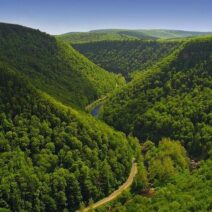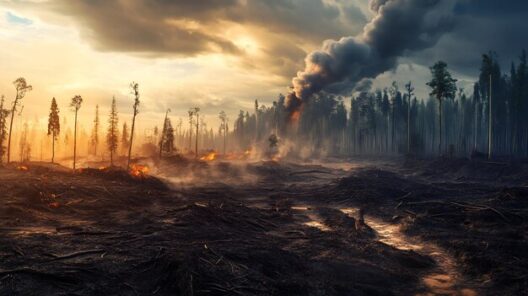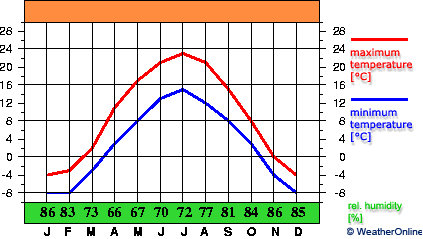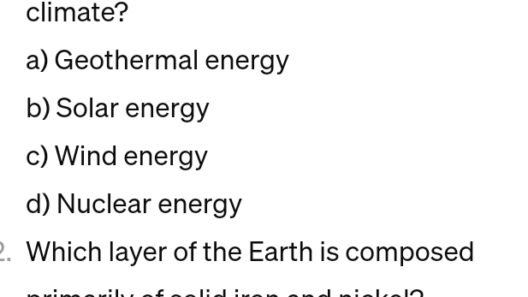The climate of the temperate deciduous forest is a symphony of mildness and variability, where each season contributes its own notes to the grand orchestration of nature. Picture this ecosystem as a grand tapestry, woven from the rich threads of changing weather patterns, a dynamic equilibrium that sustains an array of flora and fauna. In this article, we will delve into the multifaceted aspects of the climate in temperate deciduous forests, highlighting its uniqueness and the phenomena that characterize this captivating biome.
Spanning a wide geographic area, typically located between the tropics and polar regions, temperate deciduous forests experience four distinct seasons: spring, summer, autumn, and winter. Each season is marked by specific climatic conditions, resembling the turning pages of a book where every chapter unfolds a different tale. This climatic diversity can be attributed to a combination of factors, including latitude, elevation, and the influence of nearby bodies of water.
The essence of spring is a rejuvenation, as temperatures begin to rise after the long, harsh winter. During this season, the average temperatures range from 10 to 18 degrees Celsius (50 to 65 degrees Fahrenheit), providing a conducive environment for the awakening of dormant flora. Buds blossom, flowers burst forth, and a vibrant palette of greens paints the landscape. Rain showers, like gentle whispers from the sky, nurture the growth of new life, encouraging trees, shrubs, and wildflowers to stretch toward the sun, adding to the forest’s charm.
Summer arrives as a glorious crescendo. The warm embrace of the sun envelops the forest, with temperatures soaring to an average of 22 to 30 degrees Celsius (72 to 86 degrees Fahrenheit). The days are long, the sunlight filtering through the dense canopy in dappled patterns, creating an enchanting interplay of light and shadow on the forest floor. This warmth prompts a vibrant ecstasy of life; animals are more active, the chorus of birds fills the air, and the greenery thrives, exhibiting lush growth. However, summer also brings a certain unpredictability, with occasional thunderstorms rolling through, their thunderous roars resonating like a powerful drumbeat.
As summer wanes, the leaves begin their metamorphosis, transitioning into a breathtaking tapestry of yellows, oranges, and reds, as autumn paints the forest in an artist’s palette. This transition is not merely aesthetic. It signals a slowing down, a period of preparation for the colder months ahead. Average temperatures start to decline, ranging from 10 to 20 degrees Celsius (50 to 68 degrees Fahrenheit), and daylight wanes. The forest seems to exhale, relinquishing its vibrancy gradually, settling into a hushed anticipation. The crispness in the air becomes palpable, reminding inhabitants—both human and animal—that change is a constant in the cycle of life.
Then comes winter, a season of dormancy, when the landscape dons a coat of frost and snow. Average temperatures can plummet to between -5 and 5 degrees Celsius (23 to 41 degrees Fahrenheit), often transforming the forest into a still and serene wonderland. The deciduous trees stand bare, their skeletal branches a testament to the resilience of nature, while beneath the surface, roots still remain alive, gathering fortitude for the revival of spring. This stark beauty, characterized by simplicity and silence, belies the underlying ecosystem that thrives below the snowpack.
One might ponder how the inhabitants of this biome adapt to such fluctuations in weather. Wildlife in temperate deciduous forests has developed a variety of survival strategies. Many mammals undergo a state of torpor or hibernation during the colder months, conserving energy until the warmth returns. Similarly, migratory birds leave their breeding grounds, embarking on long journeys to more temperate climes. This adaptability is a testament to the resilience and resourcefulness of life in this vibrant ecosystem.
The climate of the temperate deciduous forest is influenced by various external factors, including latitude and topography. These forests are typically located in the mid-latitudes, where the climate is characterized by a balance of seasonal changes, fostering a diverse array of plant and animal life. Proximity to large bodies of water creates microclimates within the region, providing moisture that enhances the lushness of vegetation. In certain areas, the terrain may rise and fall, revealing mountains and valleys that further influence weather patterns, often resulting in localized variations.
Human activity also plays a critical role in shaping the climate of temperate deciduous forests. Urbanization, deforestation, and climate change have profound implications for this biome. Increased greenhouse gas emissions contribute to shifting weather patterns, resulting in more extreme weather events. The delicate balance that sustains this ecosystem is at risk; loss of biodiversity, habitat destruction, and altered soil composition jeopardize the future of these rich habitats. Conservation endeavors and sustainability efforts have become paramount to ensure the health of temperate deciduous forests and the myriad of life they support.
In conclusion, the climate of temperate deciduous forests is a remarkable illustration of nature’s artistry, where mild and changing weather coalesce to create a dynamic biome that thrives on diversity. This ecosystem stands as a testament to resilience, adaptability, and the intricate connections that bind all forms of life together. It is not merely a space of ecological significance but a vibrant world that captivates the heart and mind, a reminder of the importance of preserving our planet’s natural wonders for generations to come.







